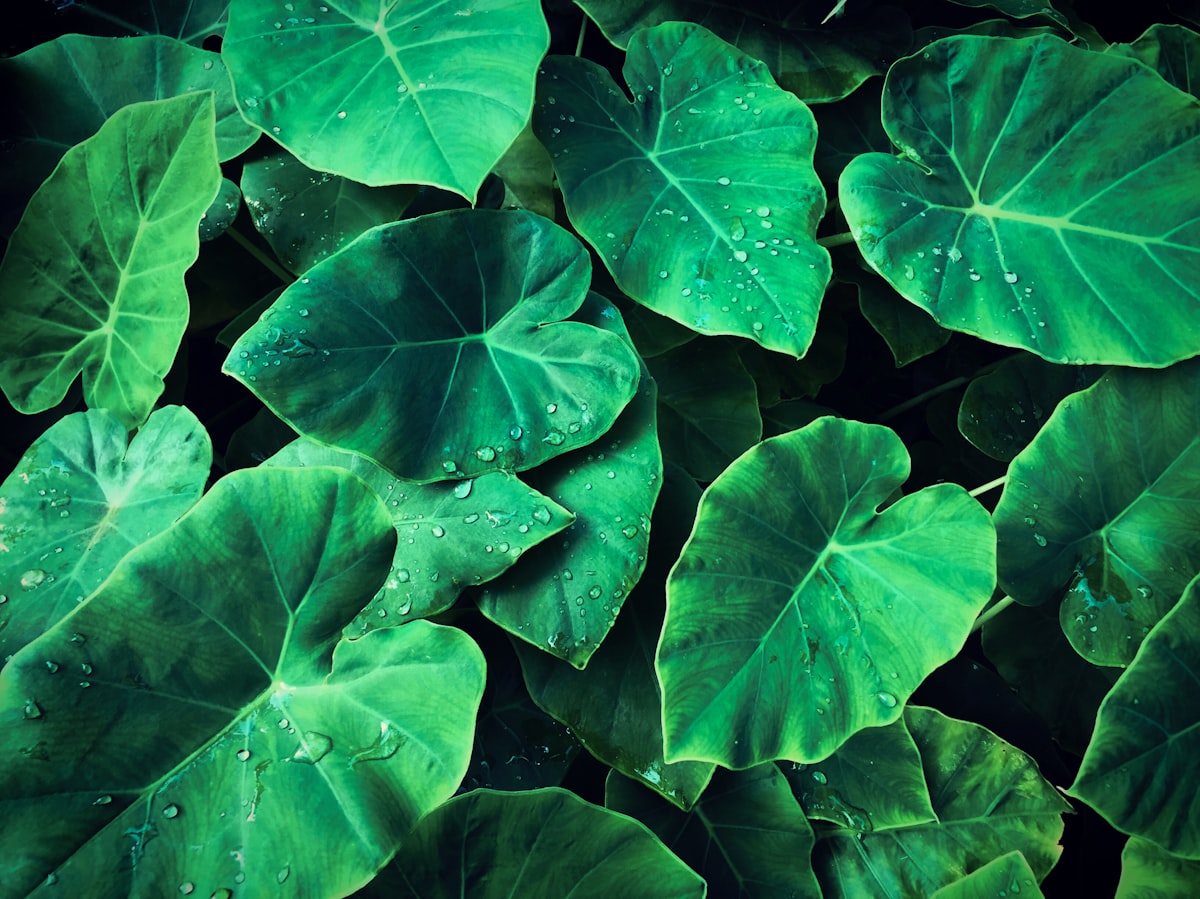How to Grow Colocasia
Colocasia, also known as elephant ear or taro, is a beautiful plant belonging to the Araceae family.

Table of Contents
Its large, tropical-looking foliage makes it a popular choice for gardeners seeking to add a bold, exotic touch to their landscapes.
Growing Colocasia successfully requires providing the right conditions, including well-draining, peat-rich soil and temperatures between 65 and 75 degrees Fahrenheit (18-24 Celsius).
Position the plant in dappled or indirect light, as excessive direct sunlight may be harmful, and ensure consistent watering to maintain moist soil.
With proper care, your Colocasia will thrive, bringing a touch of the tropics to your home or garden.
About Colocasia
Colocasia, commonly known as elephant ear plants, are tropical plants grown from tubers or rooted plants, having large, heart-shaped leaves with a glossy and evergreen appearance.
The foliage may vary in color from purplish-black and green to green/white variegated.
There are different varieties of Colocasia plants like 'Black Magic,' 'Illustris,' and 'Thailand Giant.'
These plants typically have a height of 2 to 3 feet and a similar spread.
To successfully grow colocasia, you should ensure they have plenty of warmth, humidity, moist soil, and indirect light.
Growing Colocasia
To start planting Colocasia, choose springtime when nighttime temperatures are consistently above 50°F (10°C) and daytime temperatures around 70°F (21°C).
Acquire your tubers, or corms, from a reliable nursery and ensure they are healthy and damage-free.
Select a location in your garden with full sun to partial shade, preferably near the pond's edge or where the soil retains moisture.
For container planting, choose a well-draining, peat-rich potting mix and pots with sufficient drainage holes.
Space the roots 2-3 feet apart when planting in the ground, and plant the tubers with the pointed end facing upwards, covering them with soil.
Provide consistent water and nutrients for optimal growth. In colder climates (zone 8 and below), consider growing Colocasia in containers for easier protection during winter months.

Caring for Colocasia Plant
Sun and Temperature
Colocasia thrives in sunlight, so ensure it gets plenty of indirect light. Maintain temperatures between 65 and 75 degrees F (18-24 C) for optimal growth.
Water and Humidity
Water your plant generously, maintaining consistently moist soil.
Colocasia prefers a humid environment, so creating a high-humidity area around your plant is beneficial.
Soil
Choose a well-draining, peat-rich soil for your Colocasia. This will provide a suitable environment for growth and prevent waterlogging.
Fertilizer
Fertilize your plant every two weeks using a 50 percent diluted 20-10-10 food. This will supply the necessary nutrients for healthy growth.
Repotting
Repot your Colocasia as needed when it outgrows its container. Choose a larger pot with drainage holes to accommodate its growing root system.
Pruning and Propagation
When necessary, prune your Colocasia to maintain its shape.
Propagate your plant by dividing the root system in spring replanting the divisions into new containers.

Troubleshooting Plant Problems
Growing Problems
One common issue when growing Colocasia is root rot, which can occur if the plant sits in excessively wet soil.
To prevent this, ensure your soil is well-draining and consistently monitor moisture levels.
Another aspect to consider is lighting, as Colocasia requires bright, indirect light for optimal growth.
If your plant isn't receiving enough light, consider moving it to a location with better access to sunlight.
Pests and Diseases
Colocasia plants may experience problems with pests such as aphids, whiteflies, and spider mites.
To control these pests, inspect your plant regularly for any infestations and treat it with insecticidal soap or neem oil if needed.
Additionally, look for taro leaf blight, a fungal disease that causes leaf discoloration and decay.
To prevent and control this disease, maintain proper spacing for good air circulation and avoid overhead watering.
Companion Planting
Companion planting can help to deter pests and support healthy Colocasia growth.
When selecting companion plants, consider choosing hardy ones with similar light and moisture requirements.
Some suitable companions include bergenia, hosta, and ferns, which grow well in similar conditions and can help create an attractive, diverse garden while preventing the invasive spread of Colocasia.
Conclusion
To grow Colocasia, provide your plants with dappled or indirect light, and ensure they have consistently moist soil.
Focus on maintaining a warm, humid environment and plant them in rich, loamy soil for optimal growth.
Frequently Asked Questions
What is the ideal soil mix for Colocasia?
Colocasia thrives in a well-draining soil mix that retains some moisture. A blend of equal parts potting soil, peat moss, and perlite is suitable for healthy growth.
How fast does Colocasia grow?
Colocasia is a fast-growing plant, especially during the warm months. It can grow up to 2 feet in a month with optimal growing conditions.
What are the differences between Colocasia and Alocasia?
Colocasia and Alocasia are called Elephant Ears but belong to different genera.
The most notable difference is the leaf orientation: Colocasia leaves point downwards, while Alocasia leaves point upwards.
Can Colocasia be grown indoors?
Yes, Colocasia can be grown indoors with ample bright, indirect light. Position it near a window with filtered sunlight for the best growth.
Does Colocasia prefer full sun or shade?
Colocasia prefers partial shade or filtered sunlight. Direct exposure to harsh, full sun may cause leaf burn or discoloration.
How to care for Colocasia in pots?
Caring for potted Colocasia involves regular watering to keep the soil evenly moist, using a well-draining soil mix, and repotting it every 2-3 years as the plant grows.
Choose a bigger pot than its current container and provide proper light exposure for optimal growth.


